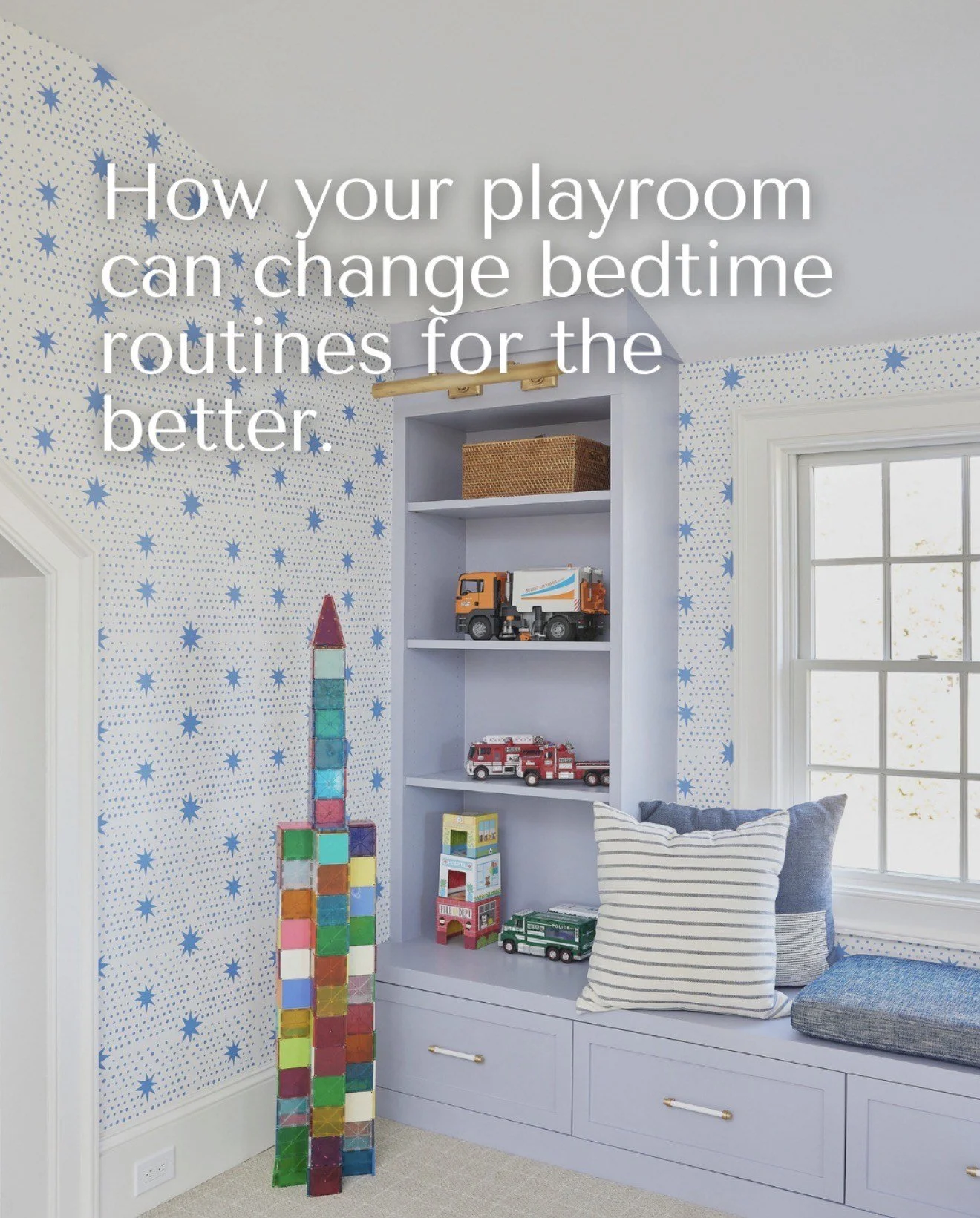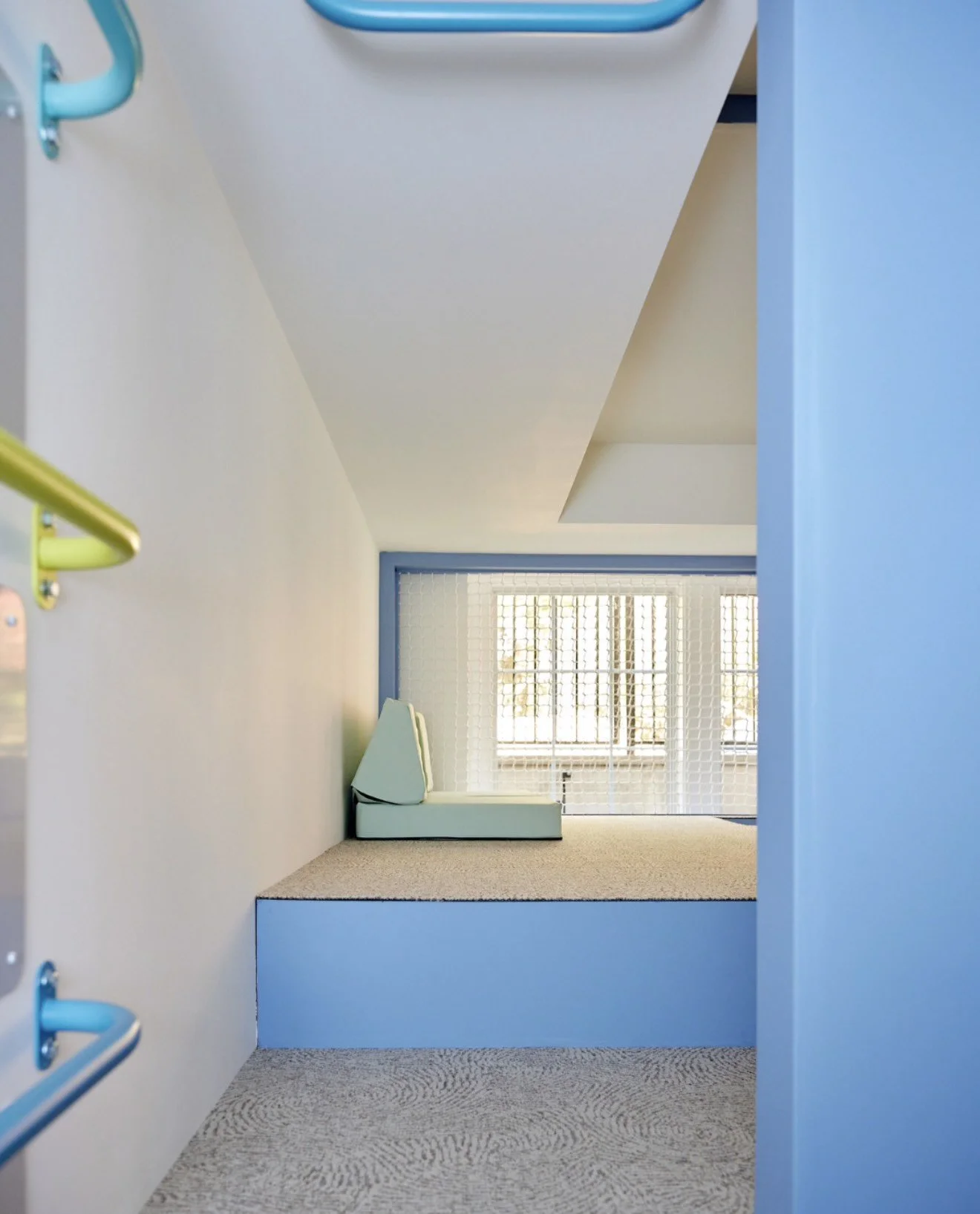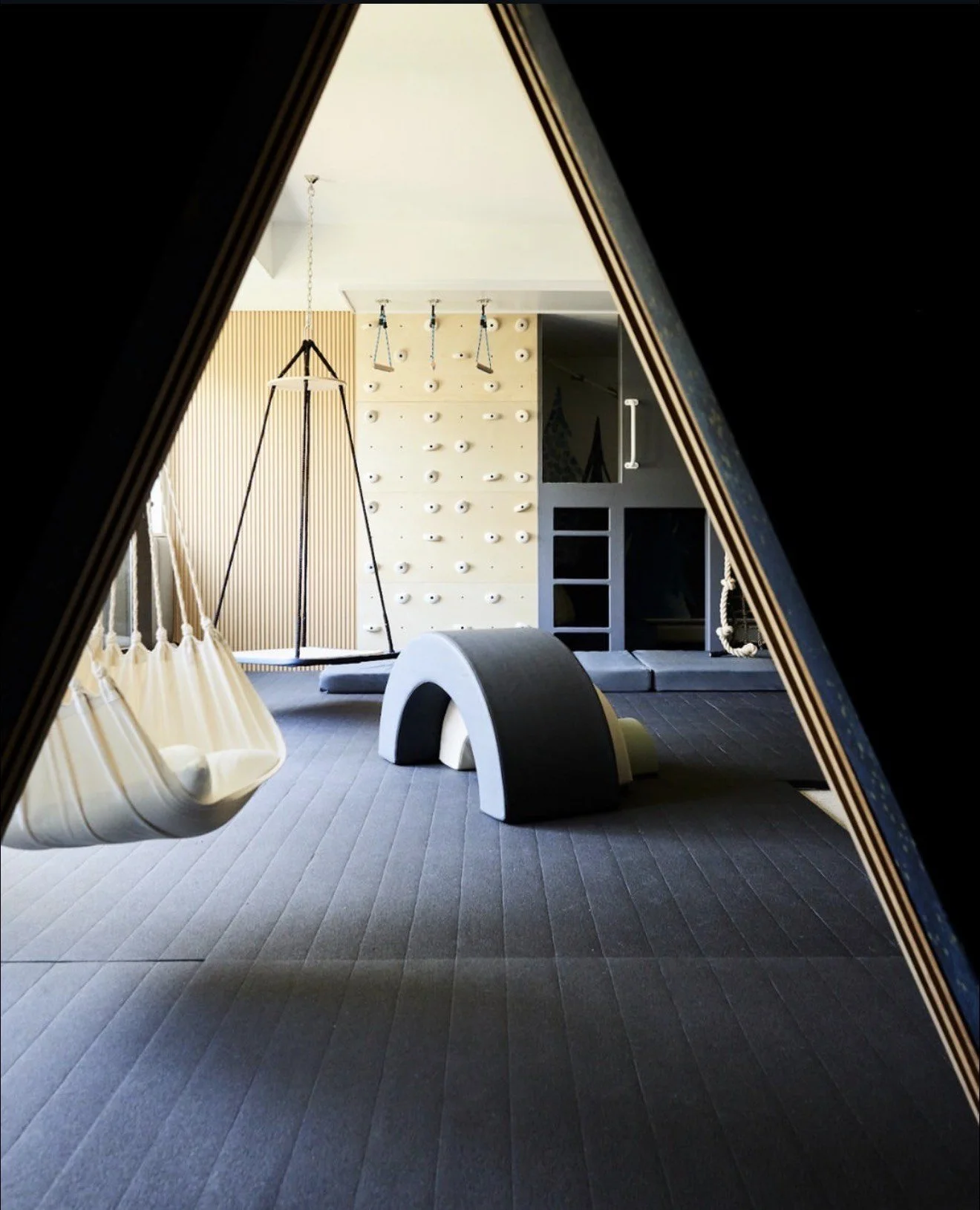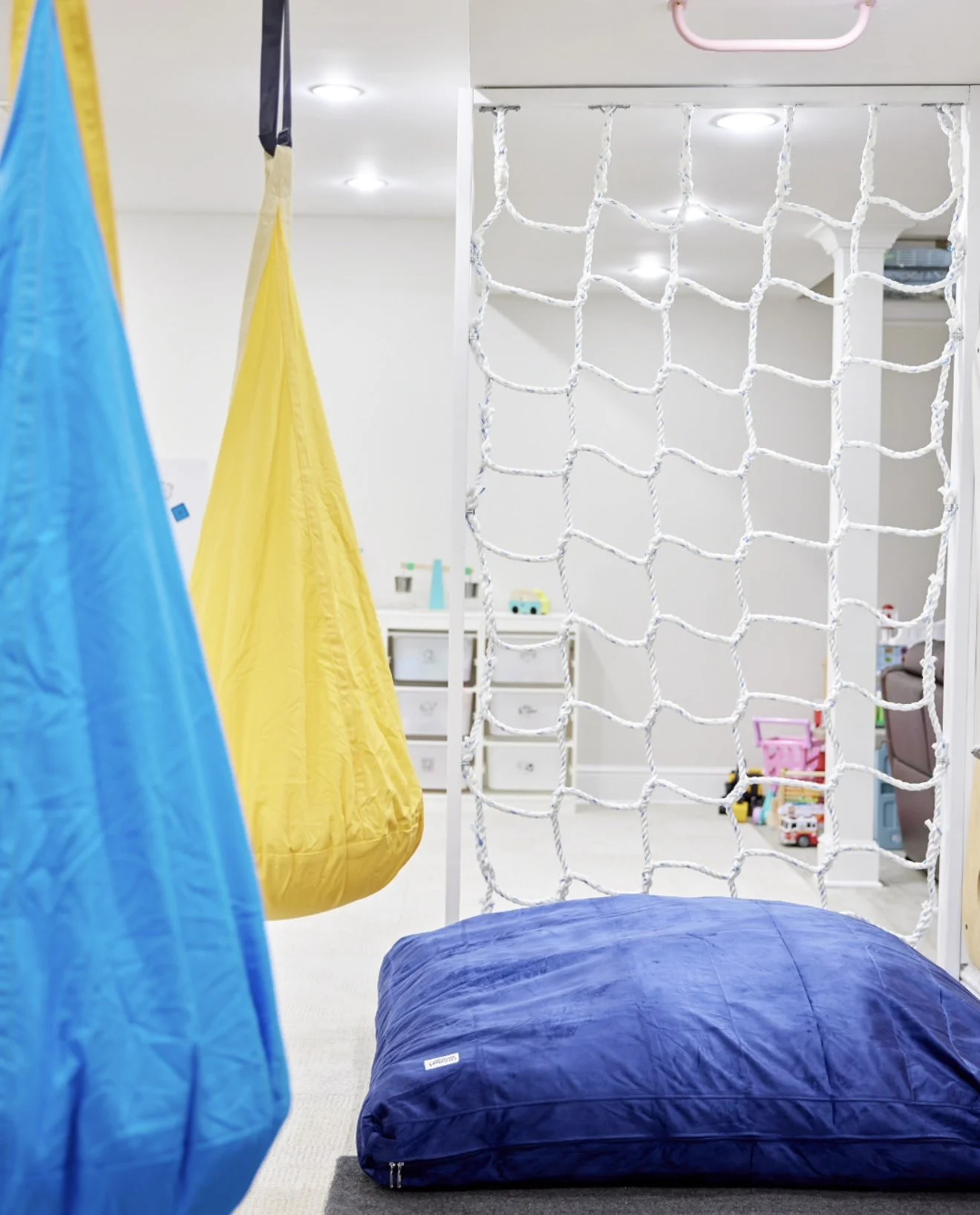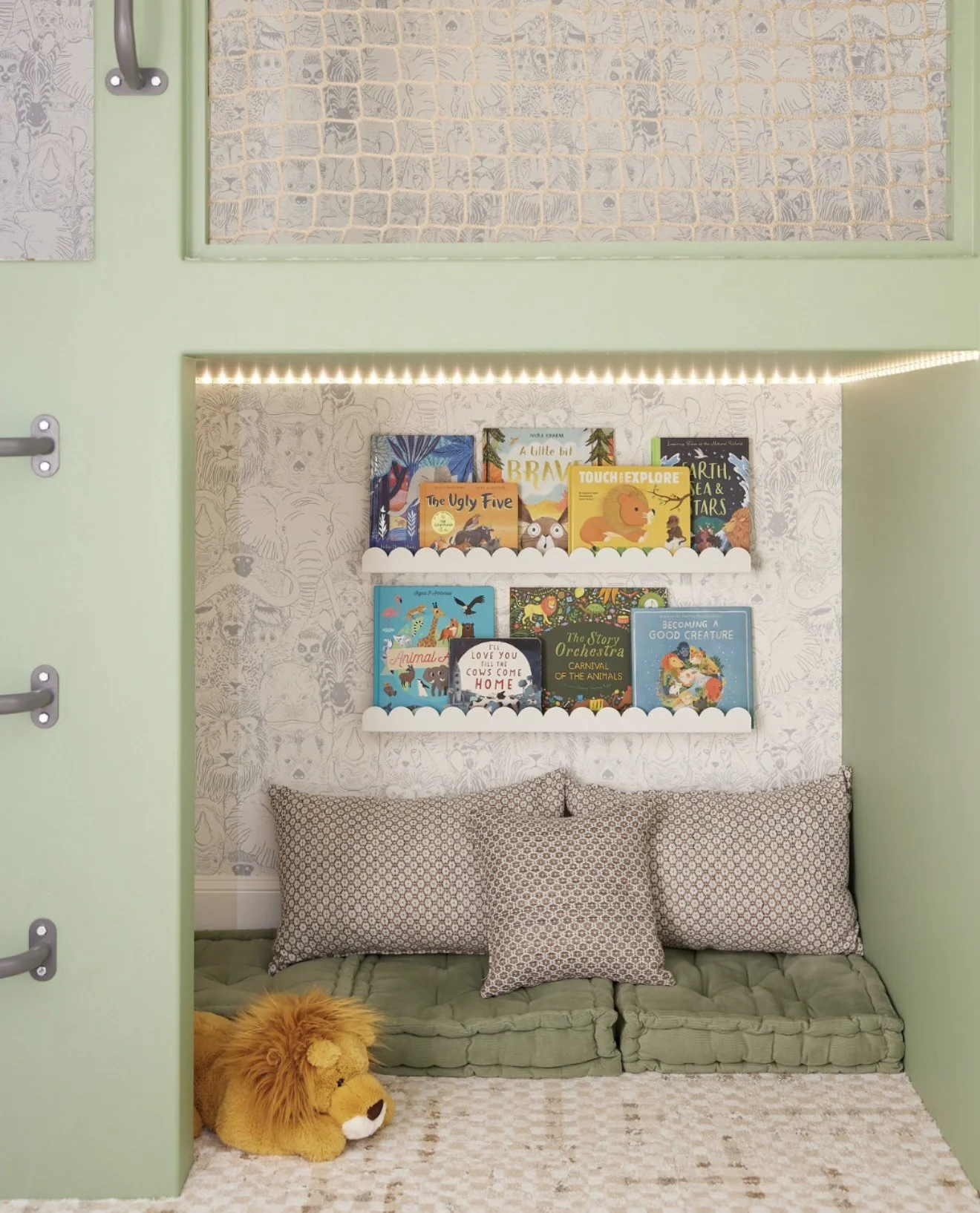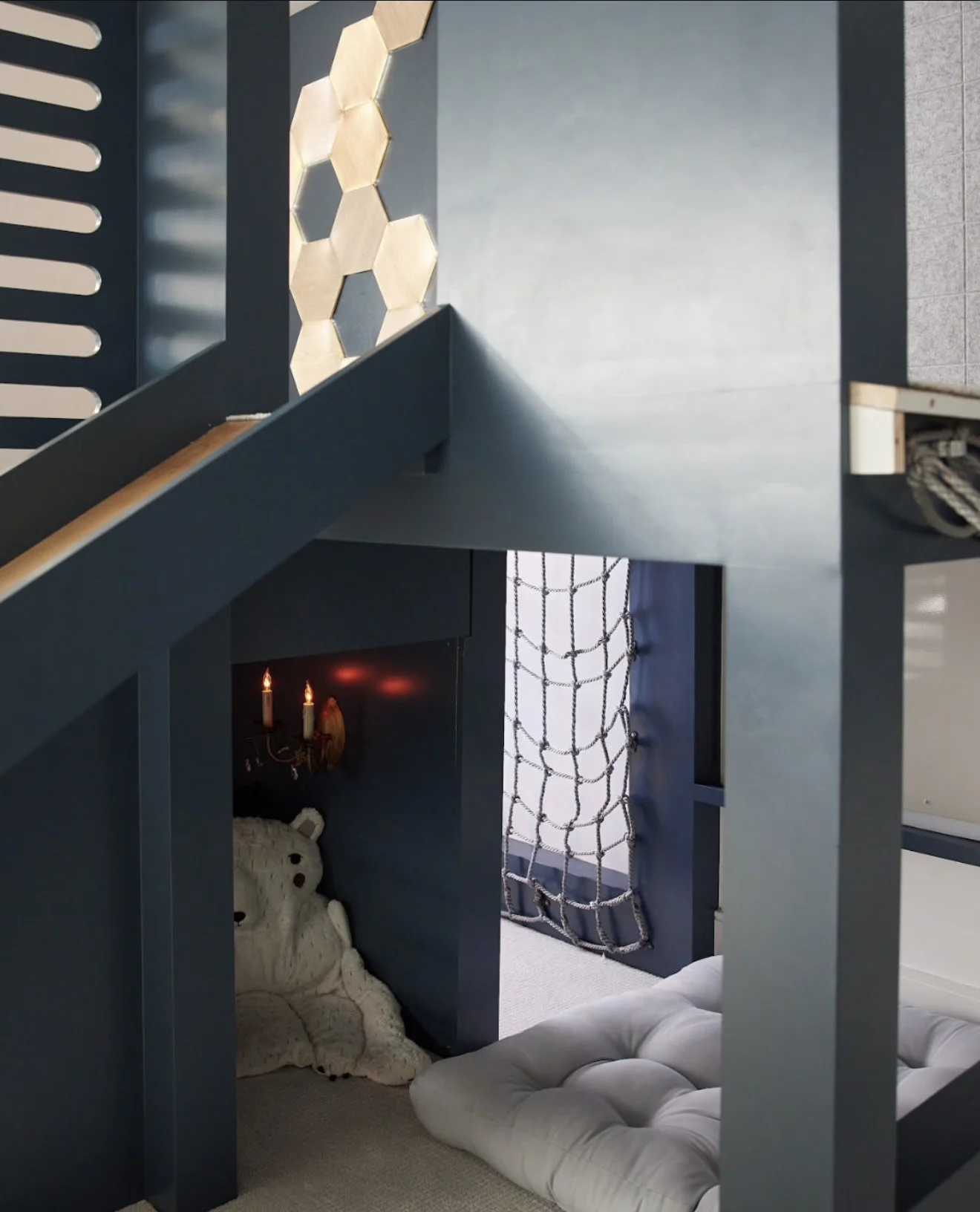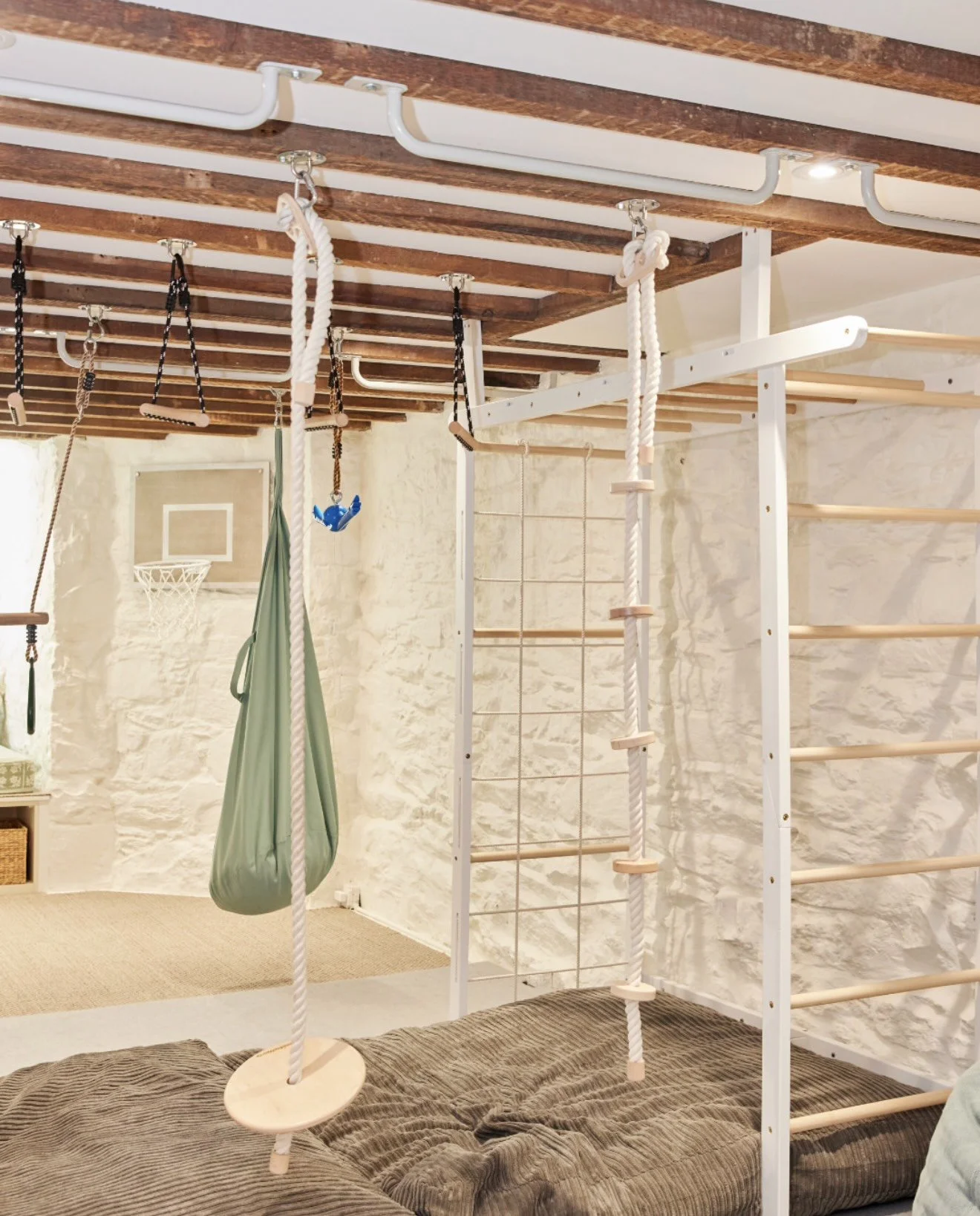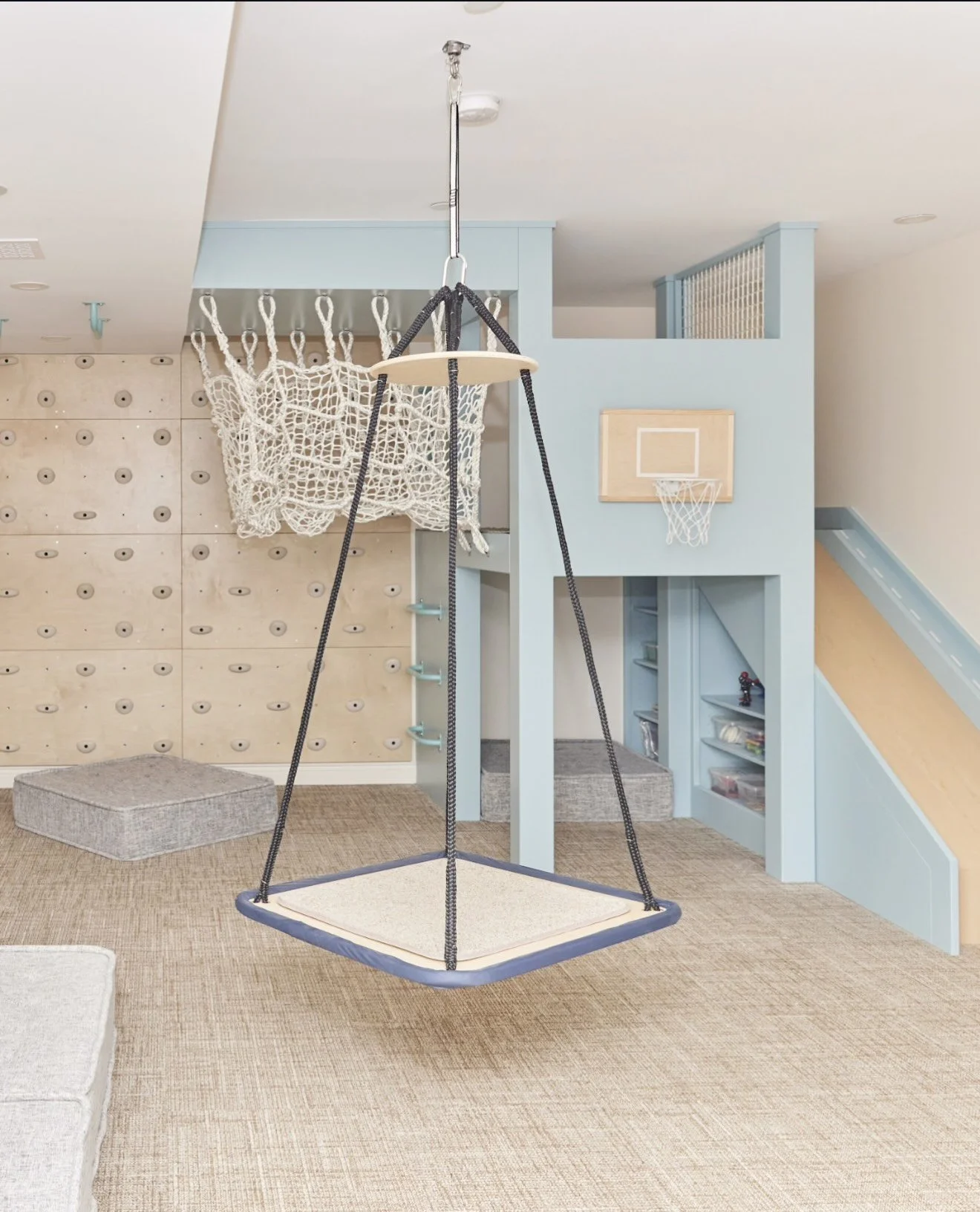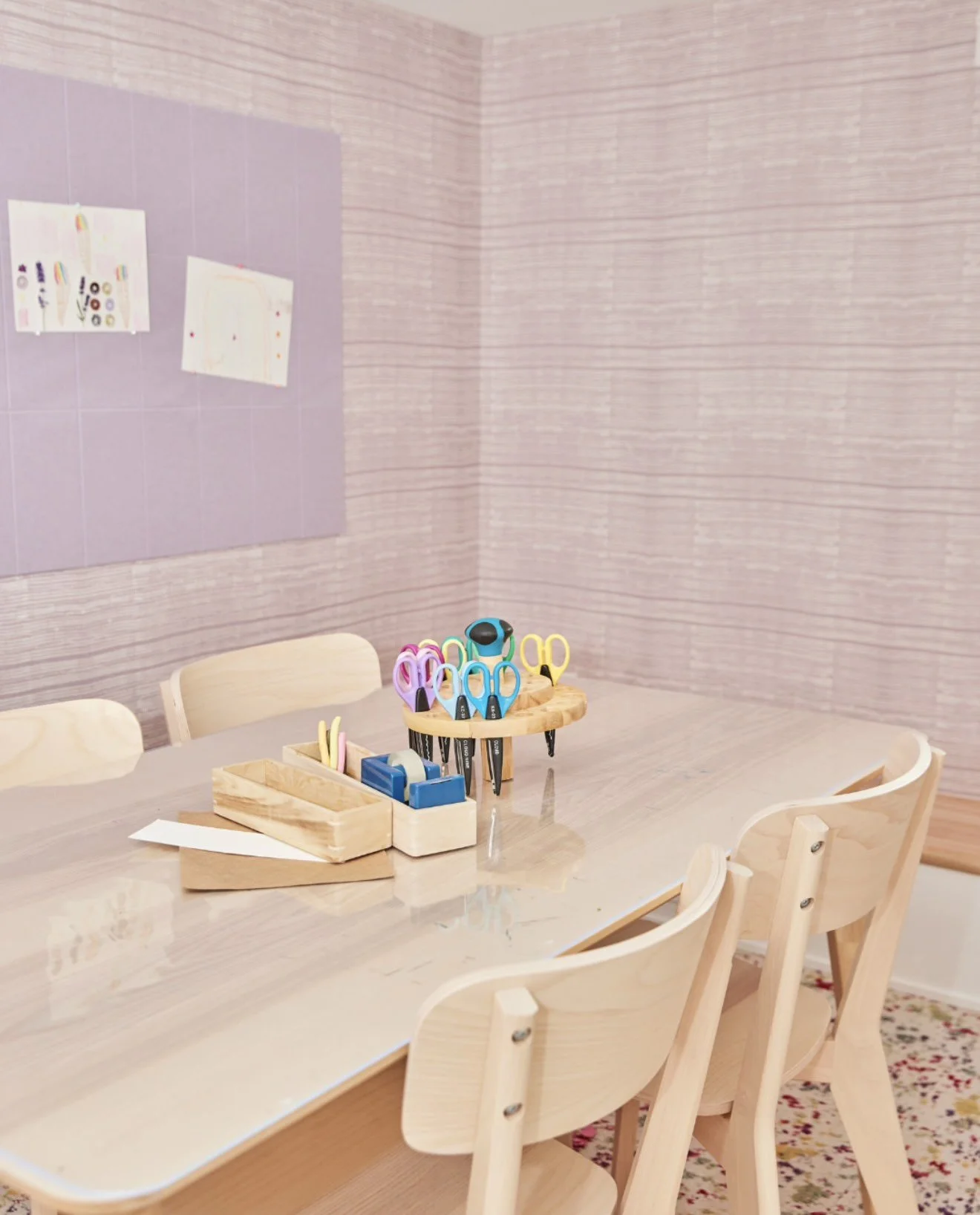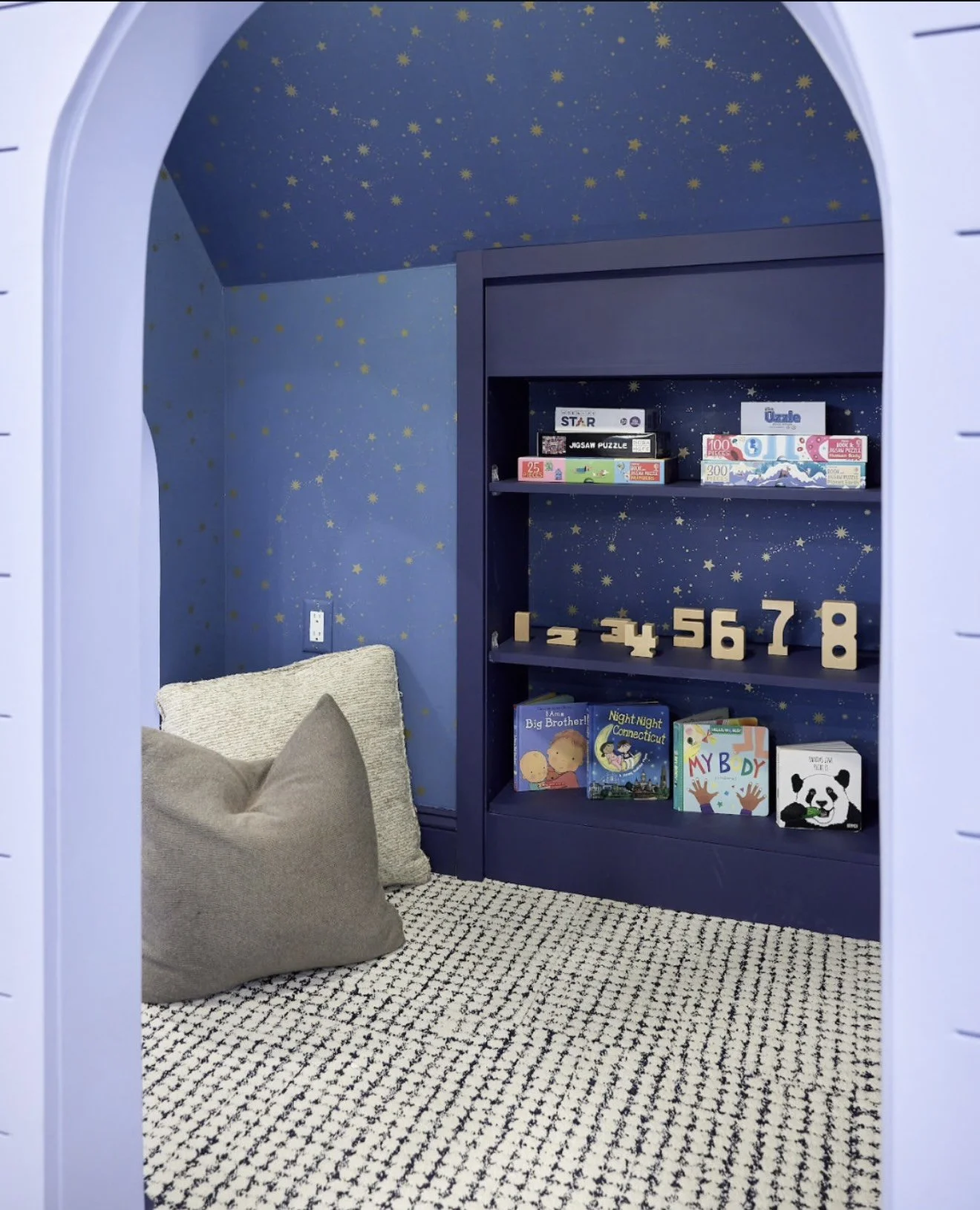Better Play, Easier Bedtime
If bedtime feels like a nightly battle in your house, you’re not alone. Parents everywhere find themselves negotiating, bribing, or outright dragging their child toward pajamas and pillows. (Myself included.)
So what does bedtime have to do with playrooms? Keep reading...
Children don’t move seamlessly from high-energy chaos to peaceful sleep. They need a bridge. This is where the playroom comes in.
The best playrooms are designed with balance in mind, featuring active areas for climbing and swinging, paired with quiet corners for resting and recharging.
That balance helps a child regulate emotions and energy throughout the evening, so by the time bedtime rolls around, they’re not bouncing off the ceiling or melting down.
And when you build in sensory supports, your child arrives at bedtime already regulated, not fighting their own nervous system. For example, a simple swing, whether a pod swing, hammock, or platform, can have a profound impact on the nervous system.
Gentle, rhythmic swinging provides deep vestibular input, which helps a child regulate their emotions and transition from overstimulation to a state of calm. Just as rocking soothes a baby, a swing can help settle an older child’s body and prepare them for rest.
A playroom designed with cozy nooks, sensory-friendly lighting, and quiet activity options, such as puzzles, books, or coloring, becomes that bridge. Instead of ricocheting around until the last second, a child has a natural way to wind down.
We care about playrooms because we know they are not really about fun decor or toys. They are a tool that can significantly enhance daily routines and reduce friction at bedtime.
photography | @juliadags + @sydneysheehanphoto


